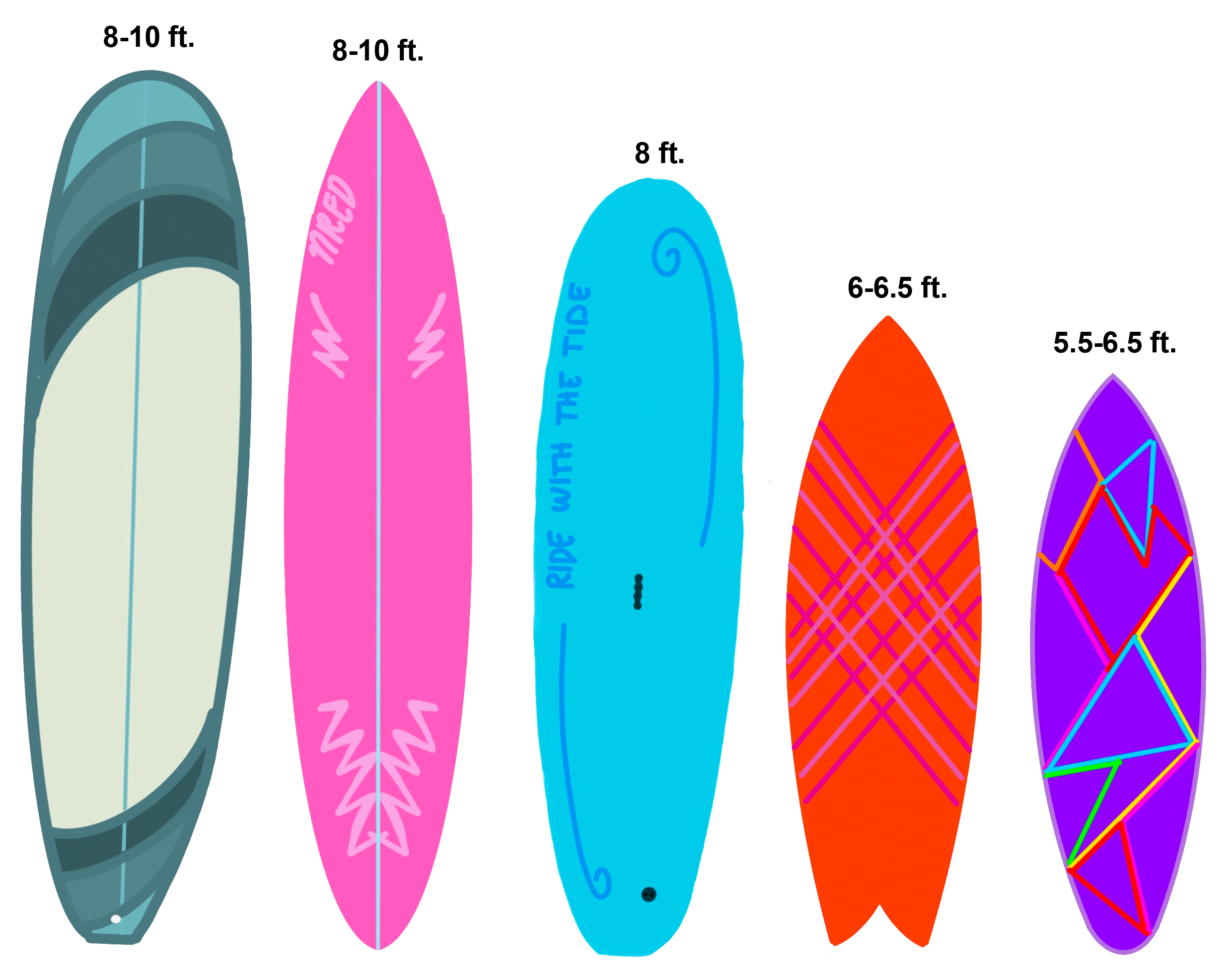Click on each board name for more information.

There’s much more to surfing than just riding a wave. In fact, most of the time spent in the water is preparing for that exact moment. On a good day, you might spend a few hours out there and still only catch a few.
Choosing the right board and the right wave, as well as paddling efficiently and popping up at the right moment, all contribute to a surfer’s ability to catch a wave. This only gets more difficult in competitive surfing as the waves get bigger and steeper and the reefs become shallow (danger!). Wiping out can also have serious consequences: broken boards, minutes underwater, serious injuries and hospitalization, or even death.
That being said, if you see a surfer wipe out on a wave during a competition, it’s not usually a reason to worry. Many surfers, even amateurs, are trained to hold their breath for minutes and are extremely physically fit. Paddling out into the lineup uses muscles all over your body, from your arms to your back and core, and is great exercise for anyone willing to give it a try.
Below we’ll take you through what you’ll need to know ahead of watching the Tokyo Olympics, and we’ll also cover some basic information should you decide to try surfing for yourself.
In competitive surfing like you’ll see at Tsurigasaki Beach during the Tokyo Olympics, athletes will most likely be riding shortboards. These smaller boards range from about five and a half feet to six and a half feet. They’re narrow, sharply pointed at the end, and are designed for maximum speed and maneuverability. With their thin, light shape, shortboards are essential in allowing surfers the flexibility to execute tricks like airs or cutbacks.
Click on each board name for more information.

For beginners, shortboards are incredibly difficult to ride. They offer less stability and buoyancy than other boards, and a beginner might feel the right and left sides of the board wavering unsteadily, making it much more difficult to paddle into and catch a wave, let alone stand up. Instead, you’ll see beginners on longer, thicker foamboards.
If not shortboards, the Tokyo athletes might opt for a fishtail board, since the mushy, crumbly summer waves might call for some extra speed or assistance from its flatter shape and a “swallow tail.” Richard O’Reilly, owner of SPYDER, a local surf shop in Hermosa Beach, explains the different types of boards in the following video.
Download the surfboard types video.
Surfers are notorious for having a niche vocabulary, and they’re often unnecessarily associated with the word “gnarly.” While they might not use that specific word on the regular, there actually are some surfing terms essential to understanding the sport’s culture.
Are you curious about how much surfing vocab you might know? Take the quiz below!
Note: After the quiz, make sure to click “show glossary” for more information.
The hardest part about surfing is your first paddle out. Your arms are burning, you’re panting, and waves are coming at you constantly. What to do?
When watching experienced surfers paddling out, you’ll see them duck dive under oncoming waves. They’re able to submerge their smaller boards completely underneath the oncoming waves and avoid impact this way. There’s a specific technique to doing so, and it takes just as much practice as any other aspect of surfing.
For beginners on larger boards, it’s a bit difficult to submerge the board fully, so novice surfers must unfortunately bear the impact of oncoming waves. For someone on a longboard, the best bet is to either push up on the board and let the water flow over and around you, or flip the board over completely and grip the sides while the wave passes over – a technique called “turtling” or a “turtle roll.” If the wave is absolutely gigantic, ditching the board and diving through the wave is probably the answer.
Something beginners also struggle with is the pop-up. After paddling into a wave, standing up quickly onto the board takes a long time to master properly. A quick pop-up is crucial to dropping into big waves in competitions – if you pop up too late, you might wipe out. And on a ten-foot wave, that’s bad news.
I interviewed two Manhattan Beach locals, experienced surfers and instructors Cameron Nuslein and Tor Larsen, who explained to me the art of the duck dive and also the basics of the pop-up and paddling.
Download the pop-up/paddling video and the duck diving video.
Glossary photo credits: surfscience.com, beachgrit.com, San Clemente Times,
barefootsurftravel.com, Kelia Moniz, Surfer Today, surfing-waves.com, saltwaterdreaming.com